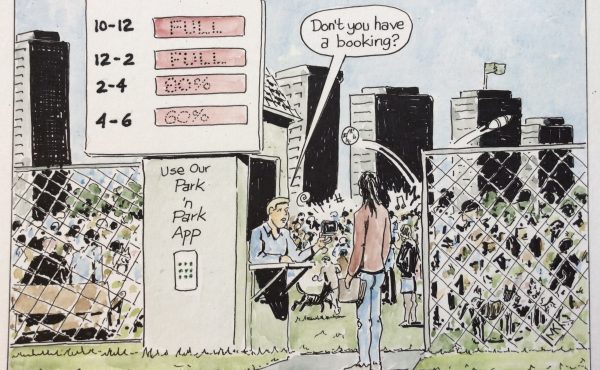

TransLink formally celebrated SkyTrain’s 25th Anniversary this past week at the Edmonds Yard in Burnaby. As I listened to the speeches, I couldn’t help but pick up on a tendency to spend more time reflecting than talking about the future. Part of this is the self-congratulatory nature of politics, but it’s also a product of transit’s awkward funding paradigm that keeps cities from funding their own infrastructure. As a result, the provincial and federal governments are invariably involved in what would otherwise be relatively local transportation investment.
The issue is not so much the additional layers of partisanship and politics – each of BC’s three most recent governments have helped advance and construct a SkyTrain line, for example – but lenses focused on large swaths of relatively empty space used to judge spending and policy decisions. As much as Canada is an urban country, municipalities are dependent on the whims of other orders of government, with different sets of priorities. While Ian Jarvis, TransLink’s CEO, spoke of shaping vibrant communities around SkyTrain stations to build ridership and a sustainable region, the Government of Canada’s line revolved around efficiency, effectiveness, security, cleanliness, and prosperity.
Although there were plenty of municipal elected officials in attendance, none were invited to speak – though Mayor Richard Stewart of Coquitlam volunteered his cheers at mentions of the Evergreen Line. The same urgency to move forward didn’t seem to show from the provincial and federal representatives. I asked him how he thought the difference in governmental scales affected how SkyTrain is perceived, and the conversation quickly swung around to the elephant in the room: funding future extensions.
Despite the “tremendous amount of everyday services provided for eight cents on the tax dollar,” Mayor Stewart and his equivalents constantly “have to ask Dad as children of the province.” Rather than consistent access to dedicated funding streams – along with easily deployed models to, for example, capture windfall profits to developers around new stations – cities often find themselves forced to rely on blunt property taxation.
With property taxes in the Lower Mainland considered a non-starter by many municipal governments, TransLink and its mayor’s council seem to have a general agreement on the financial packages they want the provincial government to help enact over the short term. Not only are the options limited – I was embroiled in a debate this past week on whether the sales tax measures popular in the US are even theoretically possible in BC, for example – but even regional authorities have their hands tied.
A two-cent-per-litre addition to the gas tax does seem set for this fall. However, despite it being levied for TransLink only over its service area, the province has held onto the final say on this kind of self-imposed tax, leaving it up to the whims of another set of politicians. Two cents isn’t enough, though, and if the remaining gap can’t be covered by some agreement on carbon taxes, road pricing, and otherwise, it will be plugged temporarily with property taxes.
This is, of course, a precarious model for sustainable and reliable funding of a transit system that has at least a decade worth of construction ahead of it and an increasingly large fleet to operate and maintain. Mayor Stewart is lucky that his preferred line is the next priority, even if it’s been repeatedly delayed. When I spoke with George Chow, Vancouver City Councillor, he conceded that Vancouver’s UBC Line will have to wait behind it in the funding queue, much as he’d love to forge ahead with both to address chronic overcrowding on the Broadway Corridor.
Rather than seeing SkyTrain in isolation, Councillor Chow moved quickly on to talking about improvements to Vancouver’s walking and cycling infrastructure, a connection other orders of government don’t commonly make. I couldn’t help but note that while costs are often lower, the same sorts of federal and political support for transit aren’t available. New, billion dollar infrastructure projects have flash, while ongoing maintenance and operations, along with the almost inherently smaller active transportation projects, fall by the wayside.
The funding-with-strings paradigm can be used to help bring transit to suburban areas that don’t have the tax base on their own, but it allows the provincial and federal governments – with different scopes and priorities – to choose the winners and the funding model. Should they be willing to throw their weight around, they can control priorities, routes, and whether something gets built at all. As cities become increasingly interested in improving their urban form, this imbalance in perception and power may prove more problematic, project-by-project.
***
Brian Gould is a transportation planner, urbanist, advocate, and recent graduate of the Master of City Planning program at UC Berkeley.



